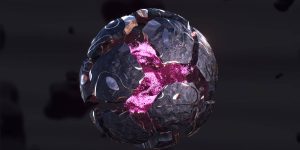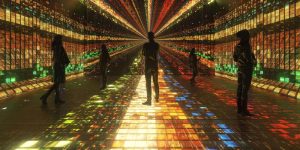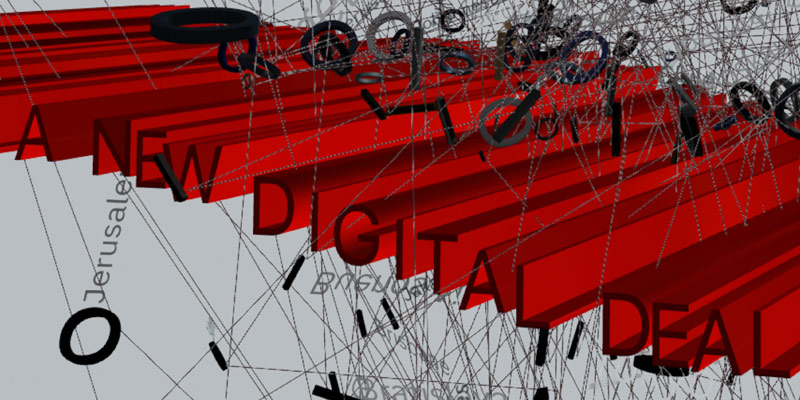synaesthetic-syntax

Synaesthetic Syntax: Panel III
Juergen Hagler (AT), Juan Manuel Escalante (US), Yin Yu (US), Sarah Groff Hennigh-Palermo (DE), Melody Loveless (US), Kate Sicchio (US), Michael Century (US), Shawn Lawson (US)
With a perceived disparity between the slow time taken to create animation and the instant time taken to perform music, how can animation be performed live? Can the audio and the visual be combined in improvised performance? How can live, hand scribing or music notation or coding or drawing be used to conjure spontaneous audio-visual performance? What is gained from real-time, instant creation in the present moment? What does it mean for ‘liveness’ to experience this at home through a screen rather than being fully present at the event?

Synaesthetic Syntax: Panel II
Birgitta Hosea (UK), Alexandra Antonopoulou (UK), Eleanor Dare (UK), Jack Caven (UK), Andrew Starkey (UK), Kate Steenhauer (UK), Eliane Gordeeff (PT)
Can music become visual? How did pioneers of visual music such as Oskar Fischinger and Mary Ellen Bute translate melody, harmony and rhythm into the form of animation? And can moving drawings become music? How can historic and / or contemporary practice demonstrate synaesthetic syntax?

Synaesthetic Syntax: Panel I
Juergen Hagler (AT), Birgitta Hosea (UK), Harry Whalley (UK), Dirk de Bruyn (AU), Alberto Novello (IT) , Lilly Husbands (US/UK)
In an age of digital synthesis and screen-based connections, is there a craving for a return to the material? Do we long for haptic feedback and analogue experience: the touch of guitar strings, the feel of charcoal smearing under the fingers, banging a drum, painting on film? Is this simply a form of nostalgia, or might it be thought through in new ways? How can it be brought together in the audio-visual?

Expanded Animation: Synaesthetic Syntax - Keynote Refik Anadol
Refik Anadol is a media artist, director and pioneer in the aesthetics of data and machine intelligence. His body of work locates creativity at the intersection of humans and machines. In taking the data that flows around us as the primary material and the neural network of a computerized mind as a collaborator, Anadol paints with a thinking brush, offering us radical visualizations of our digitized memories and expanding the possibilities of architecture, narrative, and the body in motion.

